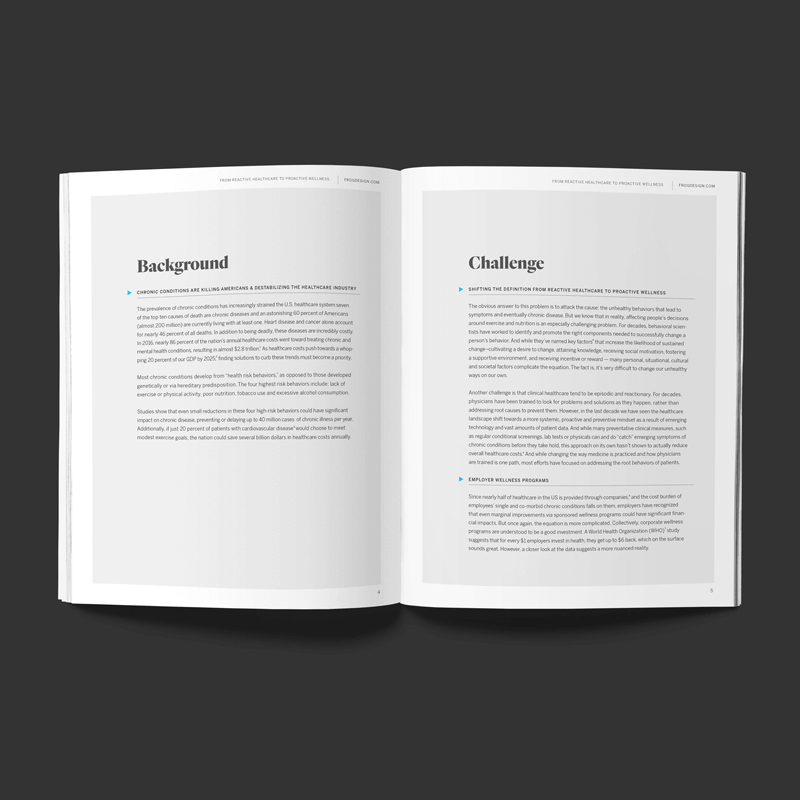
Your Complete Health Picture Broadcast from Within

It’s starting to become more common knowledge that tracking healthy habits like exercise and diet does not necessarily lead to changing health habits. Most trackers on the market are easy enough to use, and are built to remind us to keep walking, meet our step goal or eat the right thing. But overall, the crude sensors and “wearable” trend keeps most trackers from giving us the full picture of our health.
This is beginning to change. Some services are starting to gather more information in order to offer personalized insights and advice on nutrition and fitness, like genetic-testing service Nutrition Genome15. And Lumen, a hybrid nutrition/fitness device that frog had the opportunity to work on, measures metabolism in real time via a simple breath to provide personalized insights and recommendations at any moment, to convey how specific food and exercise affect users’ bodies.
But what if we went one step further to bring the sensors even closer to the source via “ingest-able” or “implant-able” health and fitness trackers? Sound creepy? It could dramatically simplify use, while increasing the types, amounts and accuracy of data collected from the body. This is not a new idea–moderately invasive health regulators for diabetes and birth control have been on the market for years. But in order to see mass adoption and real value added to users, brands and healthcare providers investing in this space will have to design specifically for different customer experiences and expectations.
One major issue is the trust factor. To avoid feeling like a cyborg, brands will need to design trust-building customer experiences to educate and inform people of this new level of interaction. Some may use the ‘install-and-forget’ model, positioning the implanted device as the Apple Watch you never have to recharge. But more likely these new trackers will require a very different type of onboarding, setup and status—one that’s designed to gain levels of trust and comfort with increased level of access to our bodies and our behaviors.
The benefits of this increased access to a bevy of personal data could be momentous in motivating people to take an active role in their own wellness, but what about the risks? Does more accurate data on fitness, sleep and nutrition actually paint a more complete picture? Will AI-based recommendations be any more personalized than broader-spectrum approaches? Will this immense access to our personal data actually offset the value we each receive from the insights? These are all questions we’re asking at frog as we continue to push the frontiers of the new health landscape. By designing new devices in the service of humans, we feel we can open up entirely new opportunities for health and wellness, influencing human behavior to be more proactively healthy, while still respecting data privacy and the basic tenets of the Hippocratic oath.


frog, part of Capgemini Invent is a global design and innovation firm. We transform businesses at scale by creating systems of brand, product and service that deliver a distinctly better experience. We strive to touch hearts and move markets. Our passion is to transform ideas into realities. We partner with clients to anticipate the future, evolve organizations and advance the human experience.
We respect your privacy
We use Cookies to improve your experience on our website. They help us to improve site performance, present you relevant advertising and enable you to share content in social media. You may accept all Cookies, or choose to manage them individually. You can change your settings at any time by clicking Cookie Settings available in the footer of every page. For more information related to the Cookies, please visit our Cookie Policy.
Our Studios


